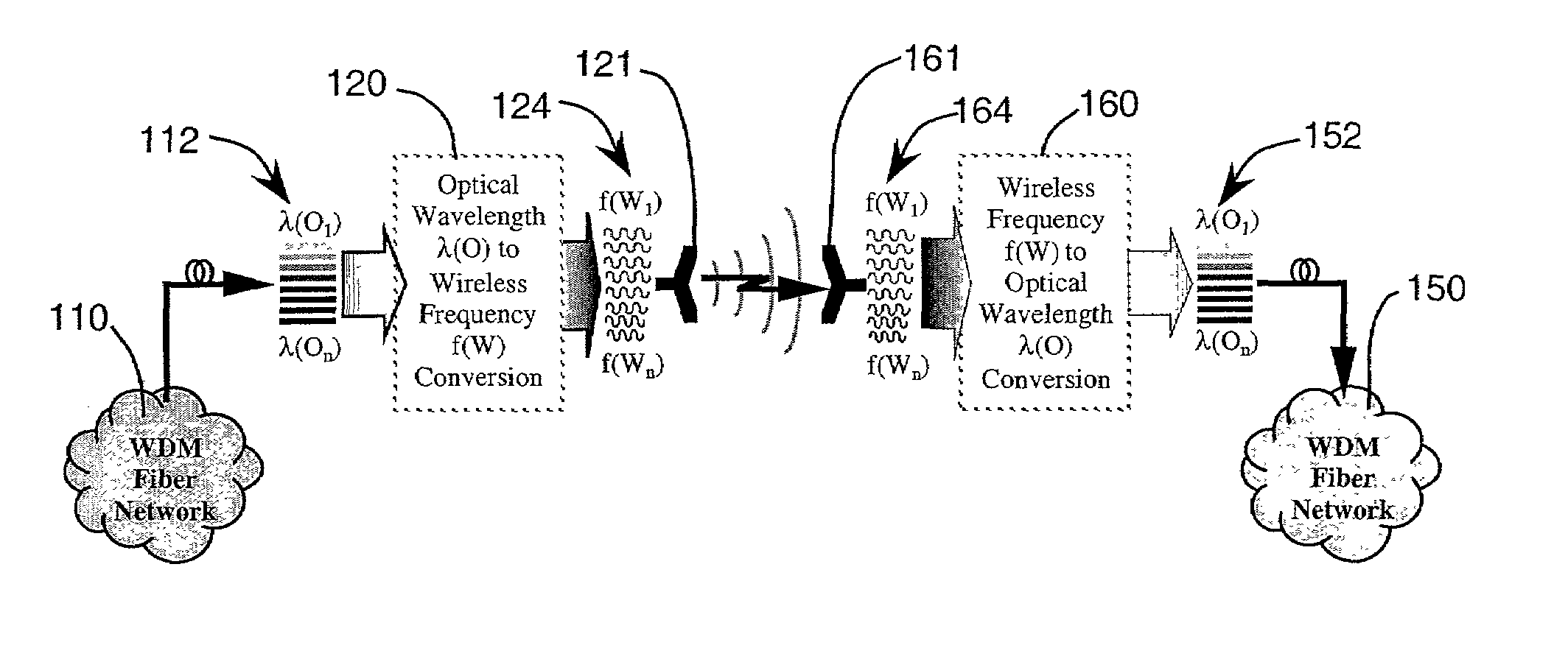Wireless wavelength division multiplexed system
a wavelength division multiplex and wireless technology, applied in the field of multi-channel communication systems, can solve the problems of dowdm systems, limited number of optical channels that can be carried, complex and difficult to implement,
- Summary
- Abstract
- Description
- Claims
- Application Information
AI Technical Summary
Benefits of technology
Problems solved by technology
Method used
Image
Examples
Embodiment Construction
[0031]The system of wireless wavelength division multiplexed networking according to the present invention will be described with reference to the accompanying figures. A high-level view of an embodiment of the system according to the present invention is provided in FIG. 1. In FIG. 1, the optical channels of a first optical network 110 using optical wavelength division multiplexing are shown as a first set of individual optical signals 112 at wavelengths λ(O1) . . . λ(On) (hereinafter λ1 . . . λn). Preferably, the first optical network 110 comprises a wavelength division multiplexed fiber network. These individual optical signals 112 at the optical wavelengths λ1 . . . λn are converted to radio frequency (RF) signals 124 at wireless frequencies f(W1) . . . f(Wn) (hereinafter f1 . . . fn) by an optical wavelength to wireless frequency converter 120. The RF signals 124 are then transmitted from a first RF aperture 121 and received by a second RF aperture 161. The received RF signals ...
PUM
 Login to View More
Login to View More Abstract
Description
Claims
Application Information
 Login to View More
Login to View More - R&D
- Intellectual Property
- Life Sciences
- Materials
- Tech Scout
- Unparalleled Data Quality
- Higher Quality Content
- 60% Fewer Hallucinations
Browse by: Latest US Patents, China's latest patents, Technical Efficacy Thesaurus, Application Domain, Technology Topic, Popular Technical Reports.
© 2025 PatSnap. All rights reserved.Legal|Privacy policy|Modern Slavery Act Transparency Statement|Sitemap|About US| Contact US: help@patsnap.com



